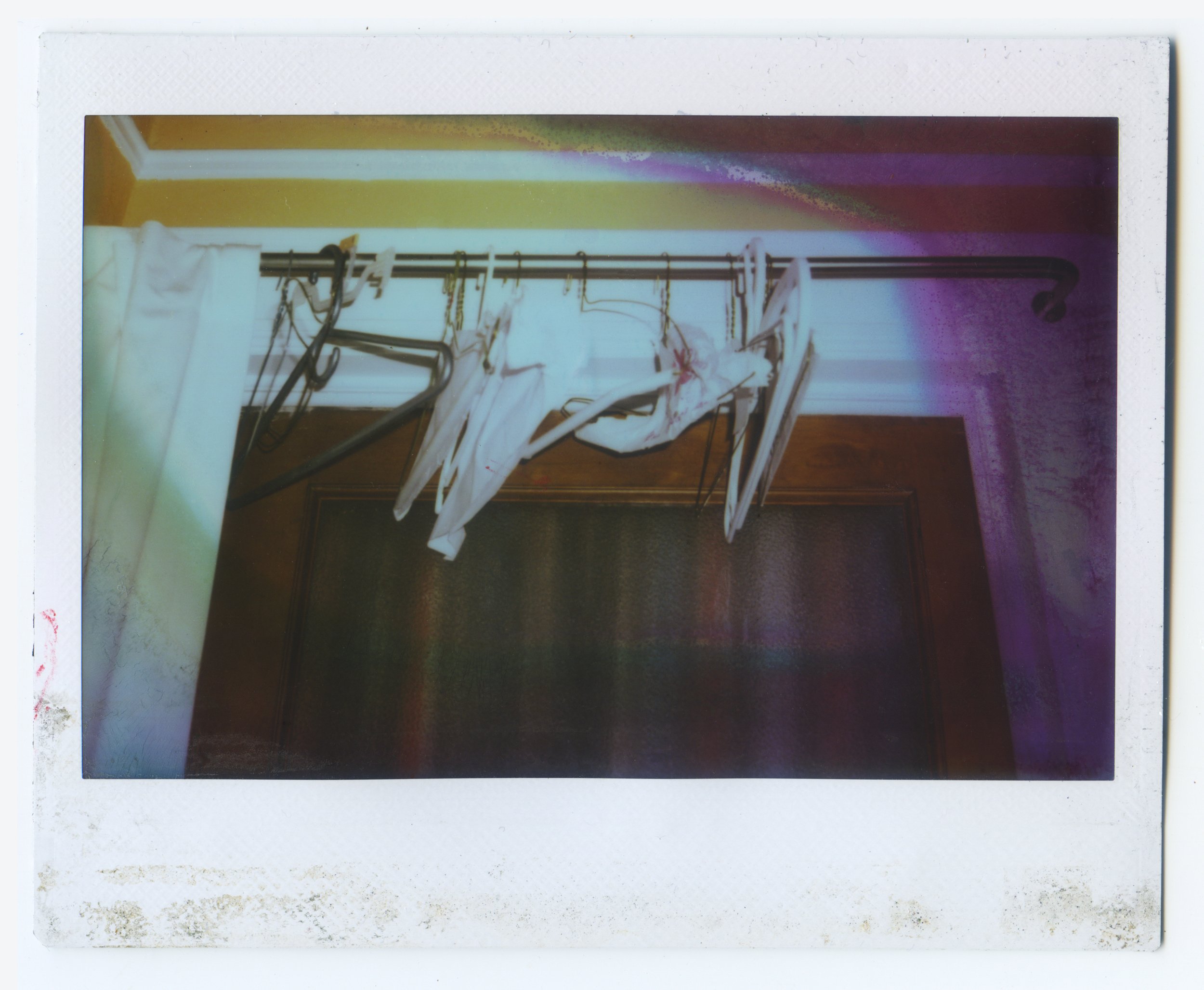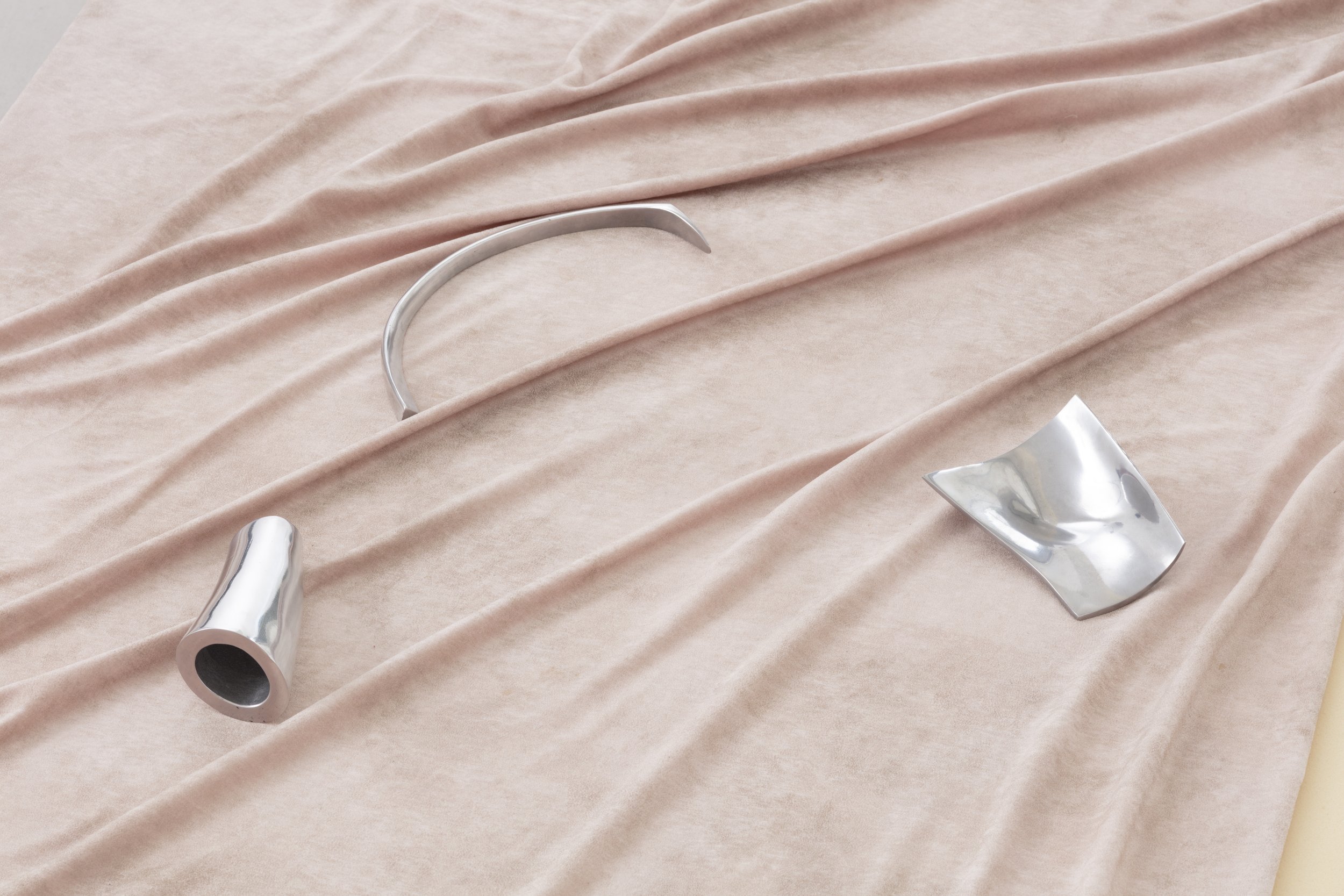Header image: Courtesy of the artists.
The MAK Center for Art and Architecture is pleased to present the 21st iteration of Garage Exchange Vienna—Los Angeles: Plastic, Plastic, Plastic featuring new work by Vienna-based artist Kerstin von Gabain and Los Angeles-based artist Ellen Schafer at the Mackey Apartments Garage Top Gallery. The artists confront the legacy of Modernist idealism that Schindler considers in his architectural work alongside the proliferation of mass-produced materials.
Plastic, Plastic, Plastic
Text by Angella d’Avignon
“The German poet and playwright Bertolt Brecht hated the Westside. He hated Hollywood, the only part of Los Angeles he seemed to be familiar with. When he arrived in 1941, Santa Monica was flat while he lived there—nothing but manicured lawns and oil derricks in dust fields.
The Mackey Apartments are replicated* at Disney World in Florida to signify a modern California apartment—the platonic ideal of apartments, landmarked as classic Los Angeles architecture although they were built in the last eighty or so years. The idea that California held the dream of the mythic West itself in its "empty" landscape, that acreage could ensure legacy, that private property meant success. These precious places built by eccentrics and exiles, polished apartments made for one specific person, sit empty most of the time, while renters drift in and out of sublets and single family studios. These interiors hold other people's boring day to day existences, hovering together anachronistic in the psychic space of a room.
In Los Angeles, you can tell the time of the month by the amount of furniture on the sidewalk—entire sofa sets, wayward mattresses, coffee tables and glass cabinets. Recognizable objects from one's interior is a kind of body horror—I once spotted a stack of metallic plastic cups I'd bought for my first apartment in my twenties from a store I thought was expensive. No one else had party cups like mine at the time, yet here they are on someone else's stairs, outside someone else's apartment that looks replicable, like it could be anywhere in suburban Southern California.
The word polymer means ‘of many parts,’ and polymers are made of long chains of molecules. Polymers abound in nature. Cellulose, the material that makes up the cell walls of plants, is a common natural polymer. Synthetic polymers are made up of long chains of atoms, arranged in repeating units, often much longer than natural ones. The length of these chains, and the patterns in which they are arrayed, make polymers strong, lightweight, and flexible. In other words, it’s what makes them so plastic.
Plastic ensured that human manufacturing would never be limited by the resources offered by the natural world. Roland Barthes called plastic ‘miraculous,’ writing that ‘plastic is the very idea of its infinite transformation,’ since any substance—ivory, tortoiseshell, glass—could be made from plastic. Barthes continues, ‘The hierarchy of substances is abolished: a single one replaces them all: the whole world can be plasticized, and even life itself since, we are told, they are beginning to make plastic aortas.’ The 21st century world is saran wrapped: by 2050, the ocean will be more plastic than water.
While plastic wooed the mid-century U.S, long-chains of houses proliferated across Brecht's hellish flat fields, entire neighborhoods sprouting up like manicured weeds, filling with mass manufactured domestic housewares made in consumer-grade plastic, taunting the poet's former presence in Los Angeles, after he fled again for his native Germany after 15 years of exile in the U.S. during World War II. Layers of layers of daily life held forth in these houses and apartments, each one haunting the next generation while the plastic utensils, hair combs, high chairs, bed pans, and party cups outlive every vision of utopia that anyone's had about Los Angeles since.
The narrative of transience is scaled by class. The burdens of precarity and desire meet in the well-appointed interiors whose objects' total value will never outweigh the endlessly unaffordable exterior in which they're housed. We are not the objects we consume but rather the paths we tread through spaces anonymous to anyone who treads them in our absence.”
* While the Prime Time Cafe at Disney World’s Hollywood Studios is not an exact replica of the Mackey Apartments, the Imagineers used it as inspiration to construct a general set of modern California apartments representing idealized mid-century living.
KERSTIN VON GABAIN
Kerstin von Gabain, born 1979 in Palo Alto, California, lives and works in Vienna. She graduated from the Academy of Fine Arts Vienna (2003). Recent solo and duo exhibitions include Imitation, EXILE Vienna (2023); Compliments, Wieoftnoch, Karlsruhe (2021); Umeå, V.esch, Vienna (2021); I’ll see you when I see you, EXILE Vienna (2021); Dark Euphoria, Austrian Museum of Applied Arts, Vienna (2021); Happiness Machines (2020). She has been included in recent group exhibitions at Mumok, Vienna (2022); Neuer Kunstverein Wien, Vienna (2022); Salzburger Kunstverein, Salzburg (2022); Kunstverein Schattendorf, Schattendorf (2020); HAUS Wien 2020, Vienna (2020), among others. She is represented by EXILE Vienna.
ELLEN SCHAFER
Ellen Schafer, born 1985 in New York City, lives and works in Los Angeles. She received a BA from the Glasgow School of Art (2012), was an MFA candidate at USC’s Roski School of Art (2014-15), and received an MFA from the University of California, Irvine (2020). Recent solo and duo exhibitions include Nickelodeon Universe, Galerie Wonnerth Dejaco, Vienna (2021); Artissima Art Fair, Turin (2021); Simplicity, an exhibition in two parts staged between New Low and The Fulcrum Press, both Los Angeles (2021), among others. She is represented by Wonnerth Dejaco in Vienna.
Artists
Related Events
Thu, June 8, 2023
6:30—8:30 pm
This exhibition series is made possible by The Austrian Federal Chancellery.
Installation images: Josh Schaedel.














